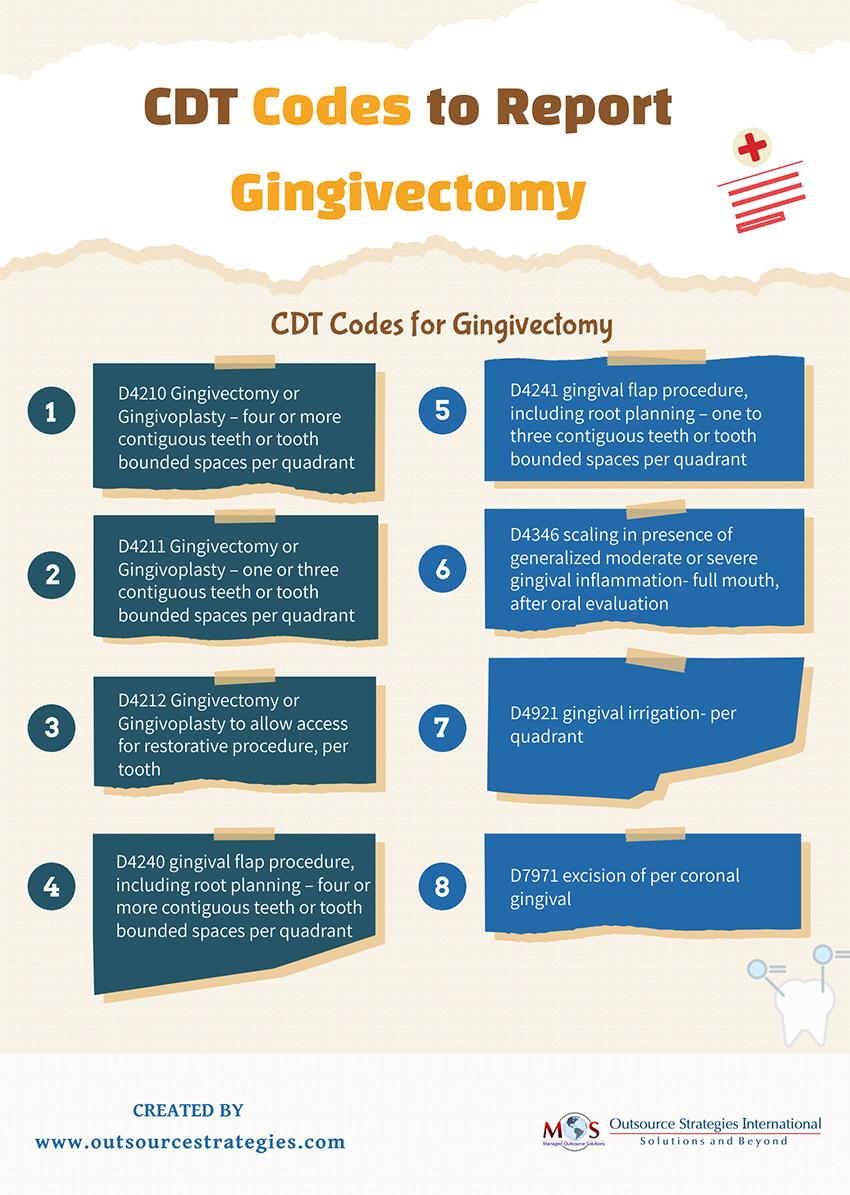Concerned about CDT dental codes for gingivectomy? For accurate billing and insurance purposes, dental professionals rely on a specific set of codes to represent different procedures. Gingivectomy involves removing a portion of the gums from in and around a tooth or teeth to treat gum disease or to lengthen the height or width of a tooth or a section of teeth. The procedure is also done to remove extra gum tissue for cosmetic reasons. Dental offices can rely on professional dental billing services to submit claims with the correct CDT codes to meet payer guidelines. A reliable dental billing company can also provide comprehensive dental eligibility verification services to verify the patient’s coverage before procedures are performed.
Getting reimbursed for different types of gingivectomy procedures can be challenging. Dental offices can rely on outsourced dental billing services to submit claims with the correct CDT codes in compliance with payer guidelines.

Understanding CDT Dental Codes for Gingivectomy
The American Dental Association (ADA) uses Current Dental Terminology (CDT) codes to represent dental procedures. Here are the major CDT codes relevant to gingivectomy:
- D4210: Gingivectomy or gingivoplasty – four or more contiguous teeth or tooth bounded spaces per quadrant. This code applies when the procedure involves four or more adjoining teeth in a specific mouth section (quadrant).
- D4211: Gingivectomy or gingivoplasty – one to three contiguous teeth or tooth bounded spaces per quadrant. This code is used for one to three neighboring teeth within a quadrant.
- D4212: Gingivectomy or Gingivoplasty to allow access for restorative procedure, per tooth. This code is specific to situations where gum tissue removal is necessary to access a tooth for restorative work.
- D4230: Anatomical crown exposure – four or more contiguous teeth or bounded tooth spaces per quadrant. This code applies when the gingivectomy exposes the crown (upper portion) of the tooth on four or more adjoining teeth in a quadrant. It’s essentially removing gum tissue to reveal more tooth structure.
- D4231: Anatomical crown exposure one to three teeth or bounded tooth spaces per quadrant. Similar to D4230, this code is used for exposing tooth crown but for one to three neighboring teeth within a quadrant.
- D4240: Gingival flap procedure, including root planing – four or more contiguous teeth or tooth bounded spaces per quadrant. This code goes beyond simple gum tissue removal. It involves lifting a gum flap to access the tooth root for deep cleaning (root planing) and then repositioning the flap, often used in conjunction with moderate to severe gum disease.
- D4241: Gingival flap procedure, including root planing – one to three contiguous teeth or tooth bounded spaces per quadrant. Similar to D4240, this code applies to flap surgery and root planing but for one to three neighboring teeth within a quadrant.
The appropriate code selection depends on the extent of the gingivectomy procedure. It’s important to note that dental billing involves more than just procedure codes. Other factors, like the anesthesia used and post-operative care, might influence the billing process. Professional providers of dental billing services will have AAPC-certified coding specialists on board, to ensure accurate coding, billing and claims submission.
Maximize reimbursements for your gingivectomy procedures!
Benefit from our specialized dental billing services!




